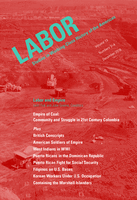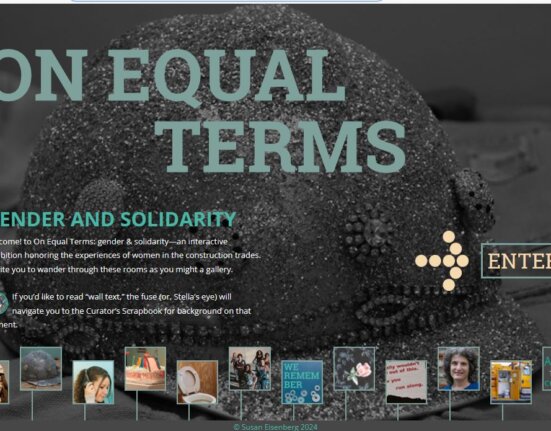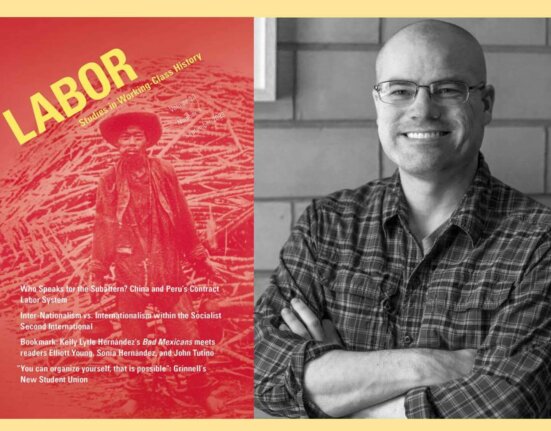In This Issue
Introduction
- Julie Greene, “Builders of Empire: Rewriting the Labor and Working-Class History of Anglo-American Global Power
The Common Verse
- Doren Robbins, “Straw Hill“
LAWCHA Watch
- Max Krochmal, “Connecting to Activists and the Public through the Civil Rights in Black and Brown Oral History Project“
Articles
- John Donoghue,”Resisting the “Enslaving Design”: Conscription and the Radical Politics of the Body in England’s Atlantic Empire, circa 1647–1660”
Over the course of the mid-seventeenth-century English Revolution, the English state made forced military labor an essential technology of empire building through a political process forged in conflict. The political stakes here were high, as resistance to the press for soldiers and sailors, animated by radical republican principles linking bodily liberty to popular sovereignty, sparked two constitutional crises during the last decade of the English Revolution.
- A. Hope McGrath, ““A Slave in Uncle Sam’s Service”: Labor and Resistance in the US Army, 1865–1890”
Enlisted men were an essential source of labor in the nineteenth-century United States. Troops built infrastructure, surveyed and scouted territory, and provided services to private companies, especially railroads. They contributed in significant ways to the expansion of private investment and the extension of state power across the trans-Mississippi West. Yet soldiers have been largely absent from US labor history. This essay examines the American military labor regime and the resistance it engendered. It explores the unfree nature of military labor and its distinctiveness from “free labor” in the late nineteenth century. It also shows how soldiers challenged this labor regime. Through protest, petition, and desertion, they tried to set limits on their own exploitation. The story of these “enlisted laborers” highlights the significance of unfree military labor in the nineteenth century. It also suggests the need for more attention to the labor history of the military.
- Reena N. Goldthree,”“A Greater Enterprise than the Panama Canal”: Migrant Labor and Military Recruitment in the World War I–Era Circum-Caribbean”
Tens of thousands of Barbadians, Jamaicans, and other British West Indians journeyed to Panama during the first two decades of the twentieth century, seeking work in the Canal Zone, on the plantations of the United Fruit Company, and in port cities on the Atlantic and Pacific coasts. Following the outbreak of World War I and the opening of the Panama Canal in 1914, migrant workingmen pursued a new employment opportunity—wartime military service in the British armed forces—as the job market on the isthmus contracted sharply and wages stagnated. This article examines the enlistment of British islanders in Panama as soldiers in the British West Indies Regiment during World War I. It responds to recent calls to “bridge the gap between military history and labor history” by exposing the dynamic interplay between interimperial labor migration and military recruitment in the circum-Caribbean.
- Micah Wright,”Building an Occupation: Puerto Rican Laborers in the Dominican Republic, 1916–1924”
This article details US officials’ mobilization of Puerto Rican labor during the occupation of the Dominican Republic (1916–1924) and the consequences for transnational working-class solidarity. It argues that the military government relied on Puerto Ricans as both imperial laborers and role models whose presumed cultural affinities with the Dominican populace would forestall resistance and contribute to efforts to reform Dominican society. Yet the rise of Dominican nationalist resistance forced Puerto Ricans to reconcile collaboration with their identity as Latinos and second-class American citizens. As they struggled to choose between conflicting loyalties, they were alternately labeled traitors to the United States or to their race. By the final years of the occupation, Puerto Ricans were condemned as colonial sepoys and abandoned by the very occupation they had helped to build. The article concludes that the Dominican case illustrates both US empire’s reliance on colonial labor and its limitations.
- Emma Amador,”“Women Ask Relief for Puerto Ricans”: Territorial Citizenship, the Social Security Act, and Puerto Rican Communities, 1933–1939”
In the 1930s, social workers employed by New Deal agencies in Puerto Rico played central roles in advocating for the coverage of Puerto Rico under new federal social welfare provisions. These social workers fought for the island to be included under the Social Security Act of 1935 by building political coalitions to petition the US Congress for inclusion. Territorial law allowed the US Congress to determine on a case-by-case basis how to administer federal policies, including social welfare provisions, which they restricted based on popular colonial discourses that cast Puerto Ricans as racially inferior and that justified US imperialism. This essay explores how social workers organized and were successful in achieving the partial coverage of Puerto Rico under amendments made to the Social Security Act in 1939. However, these changes were slow, and while further coverage was expanded over the proceeding half century, the island still remains only partially included under federal policies that are still determined by the US Congress.
- Colleen Woods,”Building Empire’s Archipelago: The Imperial Politics of Filipino Labor in the Pacific”
This article illustrates how the work of low-wage Filipino laborers fortified the US military’s imperial grasp on the Pacific and generated profit for American businesses. I argue that the hiring of Filipino laborers for work on US military installations deepened an existing transpacific migration pattern whereby state and capital interests collaborated to control, and ultimately exploit, the labor of Filipinos. This Pacific-wide circulation of Filipino laborers reproduced an imperial system based on deep wage inequalities, revealing how the geographic expansions of US national security and US capital were mutually constituted in the early postwar period.
- Kornel S. Chang,”Contesting Independence: The Decolonization of Korean Labor under US Occupation, 1945–1948”
The end of Japanese colonial rule ushered in a moment of both promise and uncertainty for Korean workers. Even as they shared hopes for labor rights and social justice, workers were divided over the meaning of independence and how it would be actualized in a liberated Korea. This moment of possibilities was quickly foreclosed by the American occupation, which turned a complex and fragmented labor movement into an undifferentiated communist bloc. America’s efforts to impose liberal reforms, as a strategy to manage Korea’s transition out of colonialism while forestalling a workers’ revolution, renewed forms of colonial state violence. But even as a hard-line approach prevailed, American advisers fought over how to best address the labor question and how it should be prioritized among different objectives in Korea. Framing the occupation as a decolonization moment, this essay seeks to recover the diverse and competing visions of workers’ rights that animated labor struggles in US-occupied Korea.
- Lauren Hirshberg,”Domestic Containment in the Marshall Islands: Making a Home for Cold War Workers in the US Imperial Pacific”
During the Cold War, the US military transformed the Marshallese Island Kwajalein into a missile range to test intercontinental ballistic missiles. To recruit American knowledge workers who would move their families to the central Pacific to operate the base, the military erected a suburban landscape on Kwajalein. Fulfillment of the promise to American knowledge workers that they could find home on Kwajalein entailed not only erecting a refuge mirroring American suburbia but also providing reassurance that American family life would not be threatened by other workers on the island. This article examines military surveillance policies on Kwajalein aimed at domestic containment: a Cold War security mission to protect the national home thousands of miles away and the local effort to secure a replica of that home in the central Pacific.







